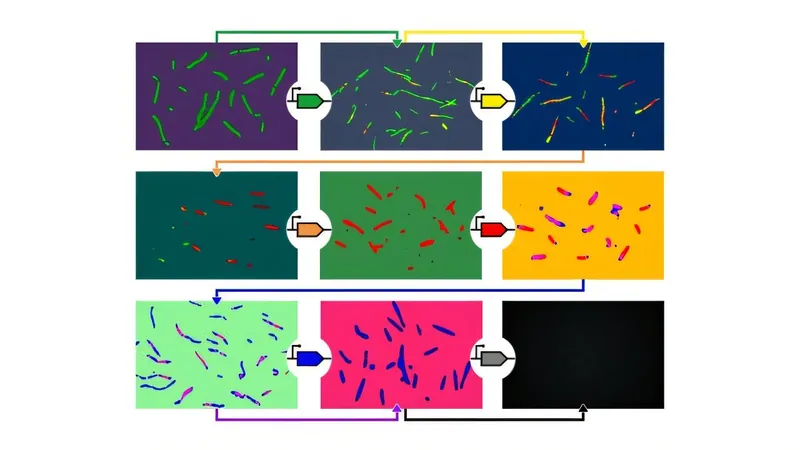
Unlocking the Secrets of Synthetic Genes: Building Life-Like Structures in an IKEA-Style Way!
2024-11-04
Author: Emily
Introduction
Researchers at the UCLA Samueli School of Engineering, in collaboration with the University of Rome Tor Vergata, have made groundbreaking strides in synthetic biology by developing artificial genes that can construct intracellular structures much like the modular furniture from IKEA. This innovative approach, described as a "cascading sequence," allows synthetic genes to assemble self-assembling structures incrementally, piece by piece.
Creating Complex Biomolecular Materials
Imagine being able to create complex biomolecular materials, such as nanoscale tubes made from DNA tiles, using a finite set of simple building blocks! This revolutionary technique not only paves the way for more intricate and functional constructions but also allows for the easy disassembly and reconfiguration of materials. Just like IKEA furniture, the components can be put together differently to serve various purposes.
Research Findings and Implications
The results of this exciting study, recently published in *Nature Communications*, were led by Professor Elisa Franco, an expert in mechanical and aerospace engineering and bioengineering at UCLA Samueli. The primary author, Daniela Sorrentino, a postdoctoral scholar in Franco's Dynamic Nucleic Acid Systems lab, expressed the potential implications of their research: “This could lead to the creation of distinct materials that can spontaneously emerge from the same set of parts simply by adjusting the order in which they assemble.”
Molecular Orchestration
As complex organisms evolve from a single cell, they undergo a series of divisions and differentiations governed by sequential gene activations. This molecular orchestration is crucial; when one gene is switched on, it sets off a chain reaction that specifies the formation of tissues or organs. A classic example of this is the gene cascade in fruit flies that determines body segment formation based on precise timing.
Replicating Gene Cascades
Francesco Ricci, a co-author from the University of Rome Tor Vergata, elaborated, “Our goal was to replicate these sophisticated gene cascades in the lab. By varying the timing of gene activation, we can trigger either the assembly or disassembly of synthetic materials.”
Experimental Approach
During their experiments, the team utilized building blocks made from synthetic DNA strands, mixing millions of DNA tiles to develop micron-scale tubular structures that materialize only when a specific RNA molecule is introduced. Remarkably, they can also program different synthetic genes to produce RNA triggers, meticulously timing the formation and breakdown of the DNA structures.
Adaptability of Techniques
One of the most exciting aspects of this research is that it transcends the confines of DNA structures; the techniques can be adapted to work with various materials and biochemical systems. Sorrentino added, “By harmonizing these biochemical signals, we can assign multiple functions to identical components. The possibilities for spontaneous material evolution are immense!”
Future Applications and Conclusion
This "IKEA-like" modular approach to synthetic biology not only holds promise for advancing our understanding of biological processes but also opens doors to new applications in medicine and biotechnology. Imagine a future where materials can be designed on-demand for tissue engineering, drug delivery systems, or even nano-robots—merging nature’s complexity with human ingenuity.
Looking Ahead
As this research continues to unfold, the potential for synthetic genetics is limitless. Stay tuned for more updates as scientists venture deeper into this realm, promising a new era of innovation in bioengineering and material science!









 Brasil (PT)
Brasil (PT)
 Canada (EN)
Canada (EN)
 Chile (ES)
Chile (ES)
 España (ES)
España (ES)
 France (FR)
France (FR)
 Hong Kong (EN)
Hong Kong (EN)
 Italia (IT)
Italia (IT)
 日本 (JA)
日本 (JA)
 Magyarország (HU)
Magyarország (HU)
 Norge (NO)
Norge (NO)
 Polska (PL)
Polska (PL)
 Schweiz (DE)
Schweiz (DE)
 Singapore (EN)
Singapore (EN)
 Sverige (SV)
Sverige (SV)
 Suomi (FI)
Suomi (FI)
 Türkiye (TR)
Türkiye (TR)